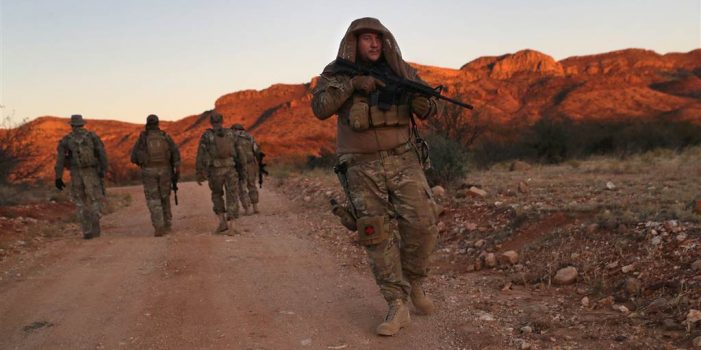Email a copy of 'Perspectives on Patrolling- Part 3, by J.M.' to a friend
9 Comments
- Ad Rural Home Defense: non-fiction by author Don ShiftA cop's guide to protecting your rural home or property during riots, civil war, or SHTF. A sequel in the Suburban Defense series.
- Ad Civil Defense ManualThe Civil Defense Manual... The A to Z of Survival. Look what in it... https://civildefensemanual.com/whats-in-the-civil-defense-manual/


For someone like myself who has no military or security background, this is very helpful. Thanks.
So far so good, all sounds very sound. I have done alot of patrols in heavy forested area’s, ambush can come at any time, always be alert. Any BS in the patrol will get someone hurt or dead. Always stop for a minute and listen about every 100 yards or so for any sounds or no sounds that means your too loud or something else is.
It has been many years since I’ve served in a Recon PLT, this is a very good brush up and refresher for me. Great info to copy and place in a binder if you have zero experience. Personal aspects of a point man is to be observant, exacting, and not prone to distraction. Some folks would call this behavior “anal” to use a modern term, for a patrolling point man, that is a very good thing.
Check out Max Velocity Tactical’s classes to learn how to do this. Reading is great and doing it six hundred years ago in the Army is great, but if you really plan on doing this, you need some current training.
This is a very interesting and informative series, which has caused me to think more carefully about my area of potential operations. I live twenty miles from the nearest small town, in an area of medium to large ranches interspersed with smaller acreage home sites. All of the roads, mostly small two lanes, are bordered on both sides with private property fenced with 5-6 strand barbed wire. All gates are locked. Many fence lines are overgrown with thick, thorny hedges of mesquites, cedars and wild rose bushes. In this environment, cutting a fence or trespassing on other’s property would likely create a dangerous enemy. Therefore, roads would likely be the most common route for patrols.
Some observations from my experience:
We have bicyclists ride our ranch roads on the weekend. You can hear them talking back and forth for a long way, you can tell they are getting closer. Motorcyclists can be heard even further away if they are yelling back and forth or talking on radios. Our neighbors have a horse drawn rubber tired wagon, and it can be heard from a distance by the conversation of the riders and the sound of hooves on pavement. Sound discipline is going to be critical. Few people walk the roads here, and walkers draw attention. At least in fairly “normal” times, a motor vehicle such as a pickup or SUV is the most inconspicuous method of travel.
I was operating in New Orleans in the aftermath of Katrina, when the city was cordoned off and curfew was enforced. Standing on a small street in the French Quarter, I could hear a National Guard foot patrol coming from blocks away, just from the sound of their boots on the pavement. I imagine that a group of armed individuals all dressed in matching Camo and walking in combat patrol formation would be very obvious and threatening to “neighbors” in the twenty mile radius of my area. I think that the idea of “contact specialists” dressed in clothing normal to the area and covertly carrying would be less likely to cause unwanted conflict. Perhaps a patrol group could practice “drifting” along less conspicuously in small groups, rather than in an overtly military manner. Obviously, the threat conditions would dictate when it was necessary to escalate to a full on military patrol model, and the terrain and environment plays a factor in what would work for your particular area.
This is a valuable subject and worthy of further discussion and development of tactics not married exclusively to the existing military model.
Stan you are describing my area to a T, Washington county , Texas.
I have never been on patrol; however when I first started hunting, my father said: “Just imagine that the deer (or elk) can shoot back. Don’t try to sneak, but watch where you put your feet and walk lightly, don’t stomp. Don’t be in a hurry and listen, pause, look, walk and listen. Watch for what doesn’t fit, such as movement, color, anything that drws attention.” His lessons came from WWII and the South Pacific. They require practice and are effective.
Good article overall.
Another way to cross open terrain is to send 2 people across and have them check to the left and right. Then they both come back to the point they crossed, and the rest of the patrol comes up and crosses on line in one dash. If you are being observed, this will prevent someone being able to count the number of members as you go across one at a time. It might be possible that an observer will not even be looking your way when the group crosses. If you cross one by one there is more time for someone to notice the movement.
Bicycles have rear wheels with different ratchets, some can make a clicking sound when coasting or being pushed. Also, a bicycle can be used as a load carrier. There were pictures of bicycles being pushed with very large load to move supplies into South Vietnam.